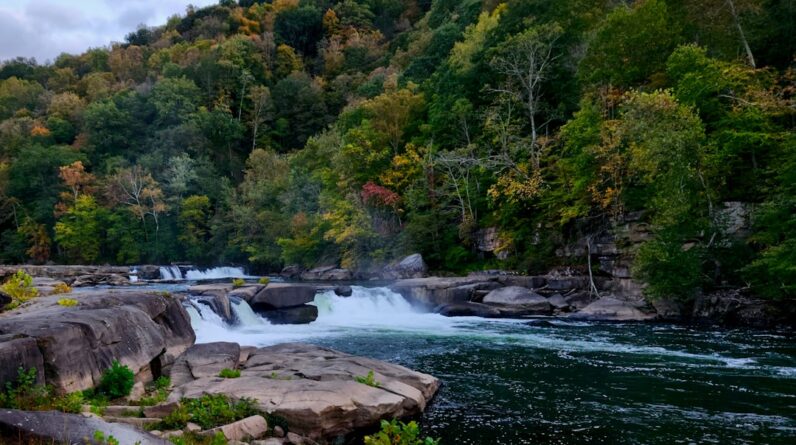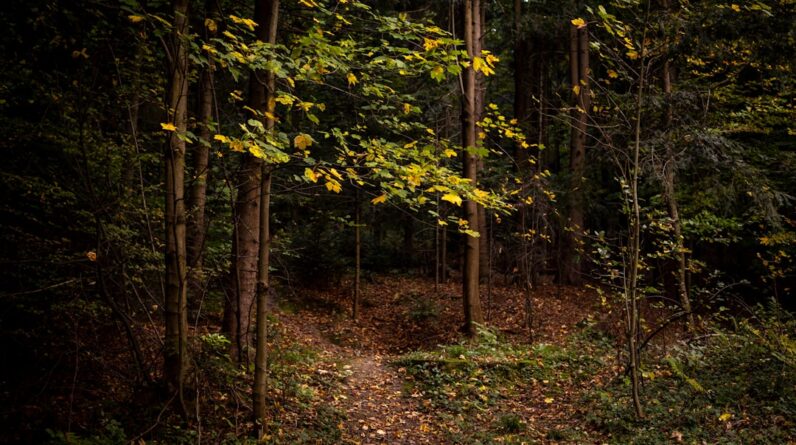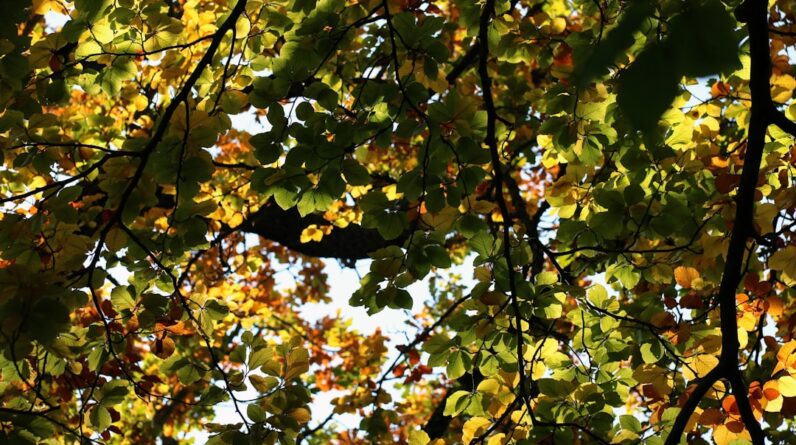Ontario is home to a vast network of provincial parks, each offering its own unique beauty and outdoor experiences. These parks are a haven for nature lovers and outdoor enthusiasts, providing opportunities for hiking, camping, fishing, and wildlife viewing. One of the most popular activities in Ontario’s provincial parks is trekking, or hiking, along the many trails that wind through the forests, along the lakeshores, and up the mountains.
Trekking in Ontario’s provincial parks is not only a great way to stay active and enjoy the outdoors, but it also allows visitors to immerse themselves in the natural beauty of the province. The trails in these parks take hikers through diverse landscapes, from dense forests to rocky cliffs to serene lakeshores. Along the way, trekkers can spot wildlife, admire stunning vistas, and connect with nature on a deeper level.
Key Takeaways
- Ontario’s Provincial Parks offer a variety of trails for trekking enthusiasts.
- The best time to go trekking in Ontario is during the fall season.
- Proper preparation is key to a safe and enjoyable trekking experience.
- Algonquin Provincial Park boasts breathtaking scenery and diverse wildlife.
- Killarney Provincial Park is home to hidden gems and stunning landscapes.
The Best Time of Year to Go Trekking in Ontario
Ontario experiences four distinct seasons: spring, summer, fall, and winter. Each season offers its own unique beauty and challenges for trekking. The best time to go trekking in Ontario depends on personal preferences and the type of experience you are looking for.
Spring is a beautiful time to go trekking in Ontario as the forests come alive with vibrant green foliage and blooming wildflowers. The weather is generally mild, although there may still be some cooler days. However, spring can also bring rain showers and muddy trails, so it’s important to come prepared with appropriate footwear and rain gear.
Summer is the peak season for trekking in Ontario’s provincial parks. The weather is warm and sunny, making it ideal for spending long days on the trails. The parks are also bustling with activity during this time, so it’s important to plan ahead and make reservations if necessary.
Fall is another popular time for trekking in Ontario as the leaves change color and create a stunning backdrop for outdoor adventures. The weather is generally mild, although it can be unpredictable, so it’s important to dress in layers and be prepared for changing conditions.
Winter trekking in Ontario offers a completely different experience. The parks are transformed into a winter wonderland, with snow-covered trails and frozen lakes. It’s important to have the appropriate gear and clothing for winter trekking, as the temperatures can be extremely cold. However, the solitude and beauty of the parks in winter make it a worthwhile adventure for those who are prepared.
Preparing for a Safe and Enjoyable Trekking Experience
Before embarking on a trekking adventure in Ontario’s provincial parks, it’s important to be prepared and have the necessary gear and knowledge to ensure a safe and enjoyable experience.
Some essential items to bring on a trek include:
– Proper footwear: Invest in a good pair of hiking boots that provide ankle support and have a sturdy sole for traction on uneven terrain.
– Navigation tools: Bring a map, compass, or GPS device to help navigate the trails.
– Water and snacks: Stay hydrated and energized by bringing plenty of water and snacks.
– First aid kit: Be prepared for any minor injuries or ailments by carrying a basic first aid kit.
– Extra clothing: Dress in layers and bring extra clothing in case of changing weather conditions.
– Sun protection: Protect yourself from the sun by wearing sunscreen, sunglasses, and a hat.
– Insect repellent: Ontario is known for its mosquitoes and black flies, so be sure to bring insect repellent.
In addition to having the right gear, it’s important to follow some safety tips while trekking in Ontario’s parks:
– Stay on marked trails: Straying from marked trails can lead to getting lost or damaging fragile ecosystems.
– Let someone know your plans: Before heading out on a trek, let someone know where you are going and when you expect to return.
– Check the weather forecast: Be aware of the weather conditions and plan your trek accordingly. Avoid trekking during severe weather conditions.
– Be mindful of wildlife: Ontario is home to a variety of wildlife, including bears and moose. Be respectful of their space and follow any guidelines or warnings provided by park staff.
– Leave no trace: Pack out what you pack in and leave the natural environment as you found it. Respect the parks and help preserve them for future generations.
Exploring the Breathtaking Scenery of Algonquin Provincial Park
Algonquin Provincial Park is one of Ontario’s most popular parks, known for its stunning landscapes and abundant wildlife. The park offers a wide range of trails, from easy walks to challenging hikes, allowing visitors to explore its diverse ecosystems.
One of the best trails to explore in Algonquin Provincial Park is the Centennial Ridges Trail. This 10-kilometer loop takes hikers along a ridge line with breathtaking views of the surrounding forests and lakes. The trail is rated as moderate to difficult, with some steep sections and rocky terrain, but the views are well worth the effort.
Another must-visit trail in Algonquin Provincial Park is the Mizzy Lake Trail. This 11-kilometer loop takes hikers through a variety of habitats, including wetlands, forests, and beaver ponds. Along the way, trekkers may spot moose, beavers, and a variety of bird species.
For those looking for a shorter hike with stunning views, the Lookout Trail is a great option. This 2-kilometer loop takes hikers up to a lookout point with panoramic views of Algonquin Park’s interior.
Discovering the Hidden Gems of Killarney Provincial Park
Killarney Provincial Park is often referred to as the “crown jewel” of Ontario’s provincial parks, thanks to its rugged landscapes and crystal-clear lakes. The park offers a variety of trails that take hikers through its stunning scenery.
One of the best trails to explore in Killarney Provincial Park is the Crack Trail. This 6-kilometer loop takes hikers through a narrow crack in the quartzite rock, offering unique views of the surrounding forests and lakes. The trail is rated as moderate to difficult, with some steep sections and rocky terrain, but the experience is truly unforgettable.
Another must-visit trail in Killarney Provincial Park is the Granite Ridge Trail. This 8-kilometer loop takes hikers along the ridges of the La Cloche Mountains, offering panoramic views of Georgian Bay and the surrounding islands. The trail is rated as moderate and is known for its stunning vistas.
For those looking for a shorter hike with beautiful scenery, the Chikanishing Trail is a great option. This 2-kilometer loop takes hikers along the shores of Georgian Bay, with opportunities for swimming and picnicking along the way.
Hiking the Challenging but Rewarding Trails of Temagami Provincial Park

Temagami Provincial Park is a remote wilderness area located in northeastern Ontario, known for its rugged landscapes and pristine lakes. The park offers a variety of challenging trails that take hikers deep into its wilderness.
One of the best trails to explore in Temagami Provincial Park is the Ishpatina Ridge Trail. This 20-kilometer loop takes hikers to the highest point in Ontario, offering panoramic views of the surrounding forests and lakes. The trail is rated as difficult due to its length and steep sections, but the sense of accomplishment at reaching the summit is well worth it.
Another must-visit trail in Temagami Provincial Park is the Maple Mountain Trail. This 10-kilometer loop takes hikers through dense forests and up to a lookout point with stunning views of Lake Temagami. The trail is rated as moderate to difficult, with some steep sections and rocky terrain.
For those looking for a shorter but challenging hike, the Caribou Mountain Trail is a great option. This 5-kilometer loop takes hikers up to the summit of Caribou Mountain, offering panoramic views of the surrounding wilderness.
Navigating the Beautiful Backcountry Trails of Quetico Provincial Park
Quetico Provincial Park is a wilderness area located in northwestern Ontario, known for its pristine lakes and rugged landscapes. The park offers a variety of backcountry trails that take hikers deep into its wilderness.
One of the best trails to explore in Quetico Provincial Park is the Pickerel Lake Loop. This 30-kilometer loop takes hikers through a series of lakes and portages, offering opportunities for camping and fishing along the way. The trail is rated as difficult due to its length and rugged terrain, but the solitude and beauty of the park make it a worthwhile adventure.
Another must-visit trail in Quetico Provincial Park is the French Lake Loop. This 20-kilometer loop takes hikers through a series of lakes and portages, with opportunities for camping and wildlife viewing. The trail is rated as moderate to difficult, with some challenging portages and rugged terrain.
For those looking for a shorter but challenging hike, the Nym Lake Loop is a great option. This 10-kilometer loop takes hikers through a series of lakes and portages, with opportunities for camping and fishing along the way.
Taking in the Stunning Views of Pukaskwa National Park’s Coastal Trails
Pukaskwa National Park is located on the shores of Lake Superior in northern Ontario, known for its rugged coastline and stunning views. The park offers a variety of coastal trails that take hikers along its pristine beaches and rocky cliffs.
One of the best coastal trails to explore in Pukaskwa National Park is the Coastal Hiking Trail. This 60-kilometer trail takes hikers along the park’s rugged coastline, offering breathtaking views of Lake Superior and opportunities for camping along the way. The trail is rated as difficult due to its length and challenging terrain, but the beauty of the park’s coastline makes it a must-visit destination.
Another must-visit coastal trail in Pukaskwa National Park is the White River Suspension Bridge Trail. This 5-kilometer trail takes hikers through dense forests and over a suspension bridge, offering stunning views of the White River and surrounding wilderness. The trail is rated as moderate and is known for its beautiful scenery.
For those looking for a shorter but scenic hike, the Manito Miikana Trail is a great option. This 2-kilometer trail takes hikers along the park’s rugged coastline, with opportunities for wildlife viewing and beachcombing.
Trekking Through the Wilderness of Wabakimi Provincial Park
Wabakimi Provincial Park is located in northwestern Ontario, known for its vast wilderness and pristine lakes. The park offers a variety of backcountry trails that take hikers deep into its remote wilderness.
One of the best trails to explore in Wabakimi Provincial Park is the Allanwater Bridge Loop. This 50-kilometer loop takes hikers through a series of lakes and portages, offering opportunities for camping and fishing along the way. The trail is rated as difficult due to its length and rugged terrain, but the solitude and beauty of the park make it a worthwhile adventure.
Another must-visit trail in Wabakimi Provincial Park is the Collins Lake Loop. This 30-kilometer loop takes hikers through a series of lakes and portages, with opportunities for camping and wildlife viewing. The trail is rated as moderate to difficult, with some challenging portages and rugged terrain.
For those looking for a shorter but challenging hike, the Sandbar Lake Loop is a great option. This 10-kilometer loop takes hikers through a series of lakes and portages, with opportunities for camping and fishing along the way.
Tips and Tricks for Planning Your Next Trekking Adventure in Ontario’s Provincial Parks
Planning a trekking adventure in Ontario’s provincial parks requires some careful preparation and research. Here are some tips and tricks to help you plan your next trekking adventure:
– Research the parks: Each provincial park in Ontario offers its own unique landscapes and trails. Research the parks to find the ones that best suit your preferences and hiking abilities.
– Check trail conditions: Before heading out on a trek, check the trail conditions and any closures or restrictions that may be in place. This information can usually be found on the park’s website or by contacting park staff.
– Make reservations: If you plan to camp overnight in the parks, it’s important to make reservations well in advance, especially during peak season. Many parks have limited backcountry campsites, so it’s important to plan ahead.
– Pack appropriately: Be sure to pack all the necessary gear and clothing for your trek. Consider the length and difficulty of the trail when deciding what to bring. It’s also important to pack enough food and water for your trek, as well as any necessary cooking equipment.
– Leave no trace: Follow the principles of Leave No Trace by packing out what you pack in and leaving the natural environment as you found it. Respect the parks and help preserve them for future generations.
– Be prepared for emergencies: It’s important to be prepared for any emergencies that may arise while trekking in Ontario’s parks. Carry a first aid kit, know how to use it, and have a plan for communication in case of an emergency.
– Respect wildlife: Ontario’s provincial parks are home to a variety of wildlife. Be respectful of their space and observe them from a distance. Do not feed or approach wildlife, as this can be dangerous for both you and the animals.
– Follow park rules and regulations: Each provincial park has its own set of rules and regulations that visitors must follow. Be sure to familiarize yourself with these rules before heading out on a trek.
Ontario’s provincial parks offer a wealth of opportunities for trekking and exploring the great outdoors. From the rugged landscapes of Algonquin Provincial Park to the stunning coastal trails of Pukaskwa National Park, there is something for every outdoor enthusiast in Ontario.
By following some basic safety tips and being prepared with the necessary gear, anyone can enjoy a safe and enjoyable trekking experience in Ontario’s provincial parks. So why not plan your next adventure and discover the breathtaking beauty of Ontario’s parks for yourself?
If you’re an avid hiker and love exploring the great outdoors, you won’t want to miss out on “Trekking the North: A Hiker’s Guide to Ontario’s Most Scenic Provincial Park Trails.” This comprehensive guide takes you through the breathtaking trails of Ontario’s provincial parks, showcasing the beauty and serenity of nature. And if you’re concerned about age-related vision changes affecting your hiking experience, be sure to check out this informative article on understanding these changes and how they can be managed: From Reading Glasses to Real Glasses: Understanding Age-Related Vision Changes. Happy hiking!








